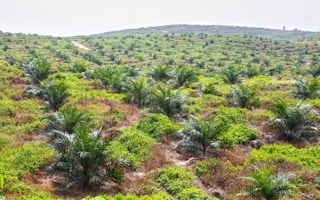Palm oil production has been spectacularly profitable but ecologically disastrous across Southeast Asia, consuming millions of hectares of indigenous lands, rainforests, and peatlands in recent decades.
That paradox has made the crop highly controversial despite its importance in providing a high-yielding source of vegetable oil. A new book, published freely online by the Center for International Forestry Research (CIFOR), weighs in on the debate and concludes — like many before it — that the problem is not the crop itself, but how it is produced.
Authored by Alain Rival of CIRAD and Patrice Levang of CIFOR, Palms of controversies: Oil palm and development challenges details the history of oil palm cultivation and explains why the crop is so widely grown: it is an an oil machine, yielding far more than other oilseeds.
“
You can plant oil palm on savannas, on degraded lands. So oil palm per se, is not responsible for deforestation. Our major take-home message in the book is, Don’t confuse the crop [with] the people who develop it
Patrice Levang, researcher and author, CIFOR
That makes palm oil a highly lucrative business, more profitable than traditional forms of land use in the tropics. Therefore oil palm is today grown by a wide range of producers, from small farmers to state companies to massive multinational conglomerates. The business was worth upward of $60 billion in 2012.
But that profitability has carried a heavy cost for native ecosystems, especially in Indonesia and Malaysia, where the crop has expanded the most in the past 20 years.
Vast areas of peatlands have been drained and forests torn down for oil palm estates, releasing hundreds of millions of tonnes of carbon into the atmosphere and putting some of the world’s most charismatic endangered species — orangutans, tigers, elephants, and Asian rhinos — at further risk.
And because governments have typically granted concessions with little consideration of occupancy or use by traditional communities, expansion has exacerbated social conflict in many places.
But there is a path forward: targeting non-forest lands for future expansion.
“Oil palm does not need to be planted on forest lands,” said Levang in a statement. “You can plant oil palm on savannas, on degraded lands. So oil palm per se, is not responsible for deforestation. Our major take-home message in the book is, Don’t confuse the crop [with] the people who develop it.”
That message is not new. In fact it has become the mantra for many green groups, most of which abandoned calls for boycotts years ago and moved to campaigns aimed at pushing companies to adopt social and environmental safeguards for palm oil.
Today, with NGOs mapping degraded, non-forest lands for potential expansion and several major growers committing to no development on carbon-dense lands, some of the focus is now shifting toward getting governments to establish policies and rewrite regulations to allow forest conservation projects to move forward.
For example, as it currently stands, Indonesian palm oil companies that want to preserve forest within their concessions have no legal mechanism for doing so and risk having those areas seized by the government and turned over to developers who are willing to convert forests to plantations. Hurdles like these will continue to challenge greener growth in the palm oil sector.
But the authors are hopeful, concluding with an examination of potential options, including intensification of existing plantations, incentives for expansion on non-forest lands, ecological landscape planning, and agroforestry techniques for production. They note the importance of finding a path forward, both for people and the environment.
“In less than a century, the oil palm has grown from the position of a minor subsistence crop in Africa to one of the world’s major agricultural crops. This spectacular evolution has profoundly modified landscapes and livelihoods under the tropics,” the authors write.
“It is no longer a question of halting the expansion of the oil palm but of finding a smart way to manage it. All stakeholders should take immediate steps to shape this development and anticipate its impact in terms of biodiversity, greenhouse gas emissions and effective development of local peoples.”
CITATION: Rival A and Levang P. 2014. Palms of controversies: Oil palm and development challenges. Bogor, Indonesia: CIFOR.

















